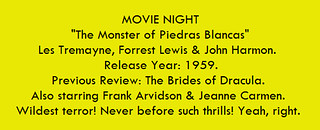 Review #1292: Nosferatu the Vampyre.
Review #1292: Nosferatu the Vampyre.Cast:
Klaus Kinski (Count Dracula), Isabelle Adjani (Lucy Harker), Bruno Ganz (Jonathan Harker), Roland Topor (Renfield), Walter Ladengast (Dr Abraham Van Helsing), Dan van Husen (Warden), Jan Groth (Harbormaster), Carsten Bodinus (Schrader), and Martje Grohmann (Mina) Written and Directed by Werner Herzog.
Review:
Horror films can leave an impact on us all. This is especially apparent with the great ones, which can endure in the hearts of curious audiences regardless of any subsequent attempts at remakes or further adaptations. But there are exceptions to this at times, even for films as haunting as F. W. Murnau's Nosferatu (1922). It is evident early on that care and appreciation has been taken by Herzog to make something that stands tall in delivering its own brand of chills that begin with its title character (both versions utilize certain characters from Bram Stoker's book, with the former using composites and this one using four of the character names). It does a tremendous job in making a quality horror film without being tied down to the traditions that banded so many other Dracula films before it.
This success is in part because of its depiction of the character, who is shown with such a striking pallor alongside long fingernails and features reminiscent of a rodent that grabs your attention just as much as the actor playing him, for which Kinski should be commended for. He had to endure four hour long sessions in makeup, with fresh latex ear pieces being made for each day of filming due to destruction of the pieces during their removal. He does a wonderful job in delivering a subdued yet chilling performance, a creature of the night that is as lonesome as he is immortal. He may stalk others with the thirst for blood, but it is a lonely quest that could go forever if he had his way, and Kinski delivers with such pathos that one could almost find him to be playing an antihero. He does have his moments in delivering chills much in the same vein that others had done with the character, but he does it with careful precision that makes for a riveting time. Adjani does just as well, quiet yet graceful in a role that desires it, where one is interested to follow along with her in a film that slowly devolves into madness. Ganz also does well with his material, one who fits the nature of the journey (with accompanying moods that run the gamut of madness) without seeming overshadowed by the other parts of the main trio. Writer-turned-actor Topor is quite right for Renfield, unsettling for whenever necessary with morbid excitement. Ladengast doesn't have as much to do, but he does what is necessary without fail. Undeniably, the music from Popul Vuh (a German collective that fell into genres such as ambient, psychedelic rock, and electronic) plays a great part in heightening the unsettling nature of the film, striking in its composition that consumes the film's soul in darkness. This extends to the camerawork and cinematography by Herzog and Jorg Schmidt-Reitwein, where certain shots from the original 1922 film are re-created, and one must give credit for the location work done in places that range from Czechoslovakia to the Netherlands to Guanajuato, Mexico (more specifically, a museum that houses mummies from a cholera outbreak in the 19th century, which is used for the opening). By the time it reaches its well-done climax, the film has already sealed itself as a morbid charmer for the ages. There were plenty of vampire films to go around for the year of 1979, particularly with a character as lonesome and evil as Dracula, with this being one of five films featuring the character in some way released in that year. The easiest one to note is Universal's updating of Dracula, which also switched the roles of Mina and Lucy around, which marketed itself as a love story with its own rendition of the lonely evil Dracula. In any case, Nosferatu the Vampyre stands tall as a great piece of film, doing wonders in stylistically updating what had been done before with its namesake while standing as an excellent horror film in its own right with delivering chills.
Next Review: Dracula (1979), as part of my feature week, Halloween - The Week After. I couldn't quite get to all of the films I wanted to do for the month despite fourteen reviews, so I decided to extend the horror spotlight until November 7th.
Overall, I give it 10 out of 10 stars.

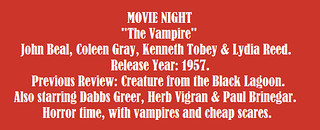


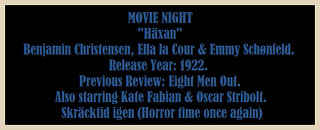
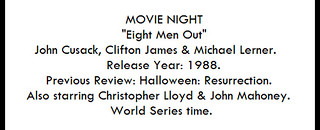



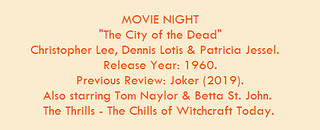
 Review #1282: Joker.
Review #1282: Joker.